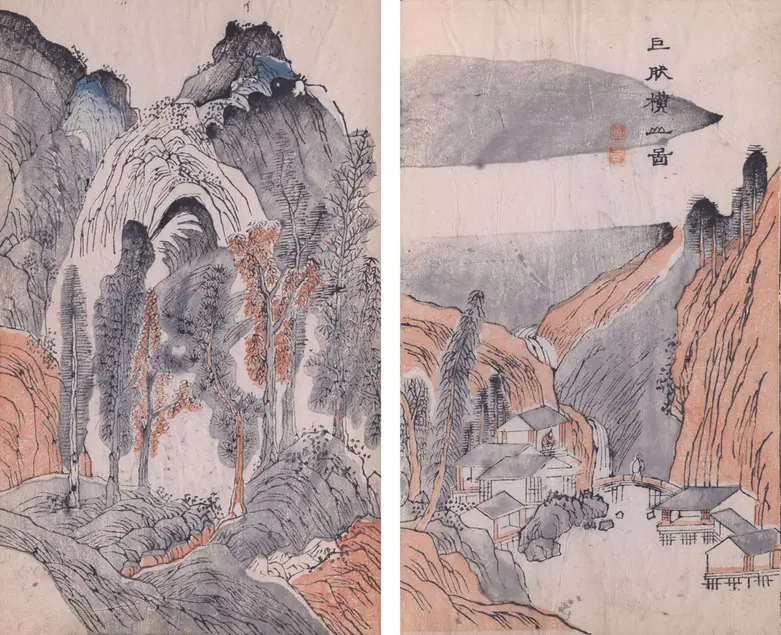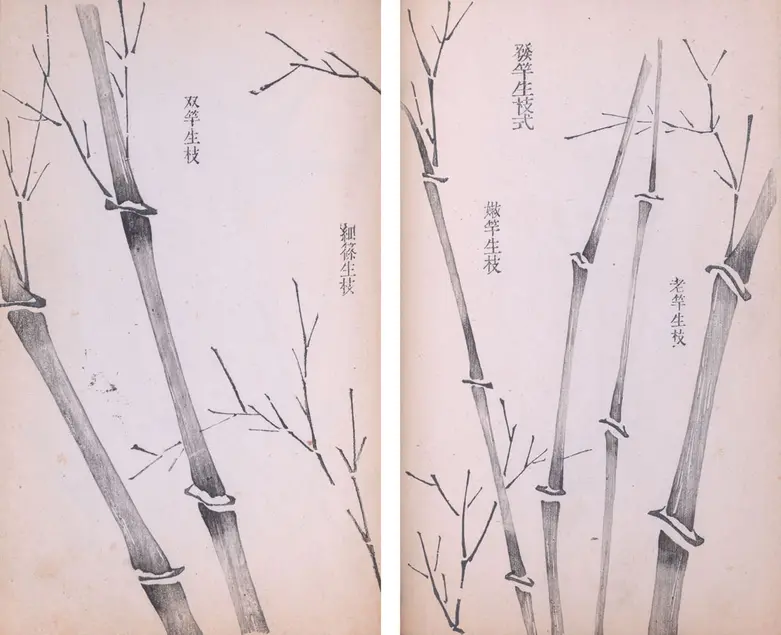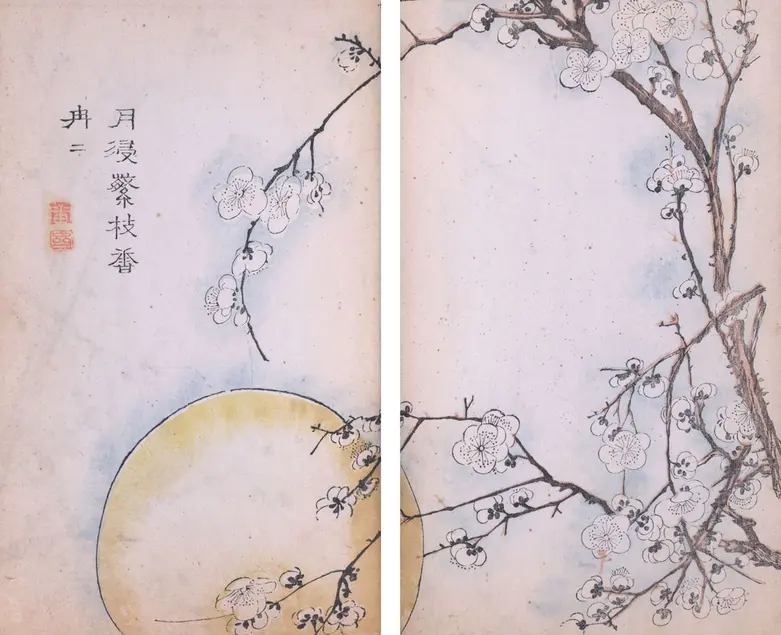Paintings in Print: Studying Art in China

“Bitter Melon,” Ten Bamboo Studio Collection of Calligraphy and Painting, Volume 2, ca. 1633–1703. Hu Zhengyan 胡正言 (1584/5–1673/4), compiler and editor. Hu Zhengyan 胡正言 and others, artists. Wang Kai 汪楷 and others, carvers. Ten Bamboo Studio, Nanjing, China, publisher. Woodblock-printed book mounted as album leaves, ink and colors on paper (multiblock technique), 9 ¾ x 11 ¼ in. | The Huntington Library, Art Museum, and Botanical Gardens.

Right: “In the Manner of Wang Wen’s Hui Orchids in Dew.” Left: “In the Manner of Zhao Mengfu’s Orchids in Wind.” Ten Bamboo Studio Collection of Calligraphy and Painting, Volume 1: Orchid, ca. 1633–1703. Hu Zhengyan 胡正言 and others, artists. Wang Kai 汪楷 and others, carvers. Ten Bamboo Studio, Nanjing, China, publisher. Woodblock-printed book mounted as album leaves, ink and colors on paper (multiblock technique), 9 ¾ x 11 ¼ in. | The Huntington Library, Art Museum, and Botanical Gardens.

Left: “Method of Pairing Groups of Three Trees,” Right: “Method of Painting Five Trees,” The Mustard Seed Garden Manual of Painting, Part 1, Volume 2: Trees, Qing dynasty, Qianlong period (1736–1795), 1782. Shen Xinyou 沈心友 (active 1679–1701), compiler. Wang Gai 王概 (1645–after 1707), artist. Publishers’ Hall of Jinchang District, Suzhou, China, publisher. Woodblock-printed book, ink and colors on paper (single- and multiblock technique), 11 9/16 x 7 3/8 in. | The Huntington Library, Art Museum, and Botanical Gardens.

“Mt. Heng by Juran,” The Mustard Seed Garden Manual of Painting, Part 1, Volume 5: Selected Works of Past Landscape Painters, Qing dynasty, Qianlong period (1736–1795), 1782. Shen Xinyou 沈心友 (active 1679–1701), compiler. Wang Gai 王概 (1645–after 1707), artist. Publishers’ Hall of Jinchang District, Suzhou, China, publisher. Woodblock-printed book, ink and colors on paper (single- and multiblock technique), 11 9/16 x 7 3/8 in. | The Huntington Library, Art Museum, and Botanical Gardens.

“Models of Bamboo Shoots and Branches,” The Mustard Seed Garden Manual of Painting, Part 2, Volume 2: Bamboo, Qing dynasty, Qianlong period (1736–1795), 1782. Shen Xinyou 沈心友 (active 1679–1701), compiler. Wang Gai 王概 (1645–after 1707) and others, artist. Publishers’ Hall of Jinchang District, Suzhou, China, publisher. Woodblock-printed book, ink and colors on paper (single- and multiblock technique), 11 9/16 x 7 3/8 in. | The Huntington Library, Art Museum, and Botanical Gardens.

“A Subtle Fragrance Envelops the Moon,” The Mustard Seed Garden Manual of Painting, Part 2, Volume 3: Plum, Qing dynasty, Qianlong period (1736–1795), 1782. Shen Xinyou 沈心友 (active 1679–1701), compiler. Wang Gai 王概 (1645–after 1707) and others, artist. Publishers’ Hall of Jinchang District, Suzhou, China, publisher. Woodblock-printed book, ink and colors on paper (single- and multiblock technique), 11 9/16 x 7 3/8 in. | The Huntington Library, Art Museum, and Botanical Gardens.
In the 16th century, Chinese publishers began creating educational art manuals that were filled with colorful prints of paintings and texts on the history and methods of brush arts. The manuals were unprecedented because they taught aspiring painters and collectors from the growing merchant class how to create and appreciate literati art—a combination of painting, calligraphy, and poetry long practiced by elite scholars. Drawing from The Huntington’s collection, “Paintings in Print” will focus on two books: The Mustard Seed Garden Manual of Painting and the Ten Bamboo Studio Collection of Calligraphy and Painting. The books are displayed together, in their entirety, for the first time in the United States. The texts are presented in their original form as well as digitized to allow visitors to explore the materials more closely.
The books are complemented with paintings—including recent donations from the Berman Foundation—that exemplify how artists studied manuals like these to learn the basics of their art.